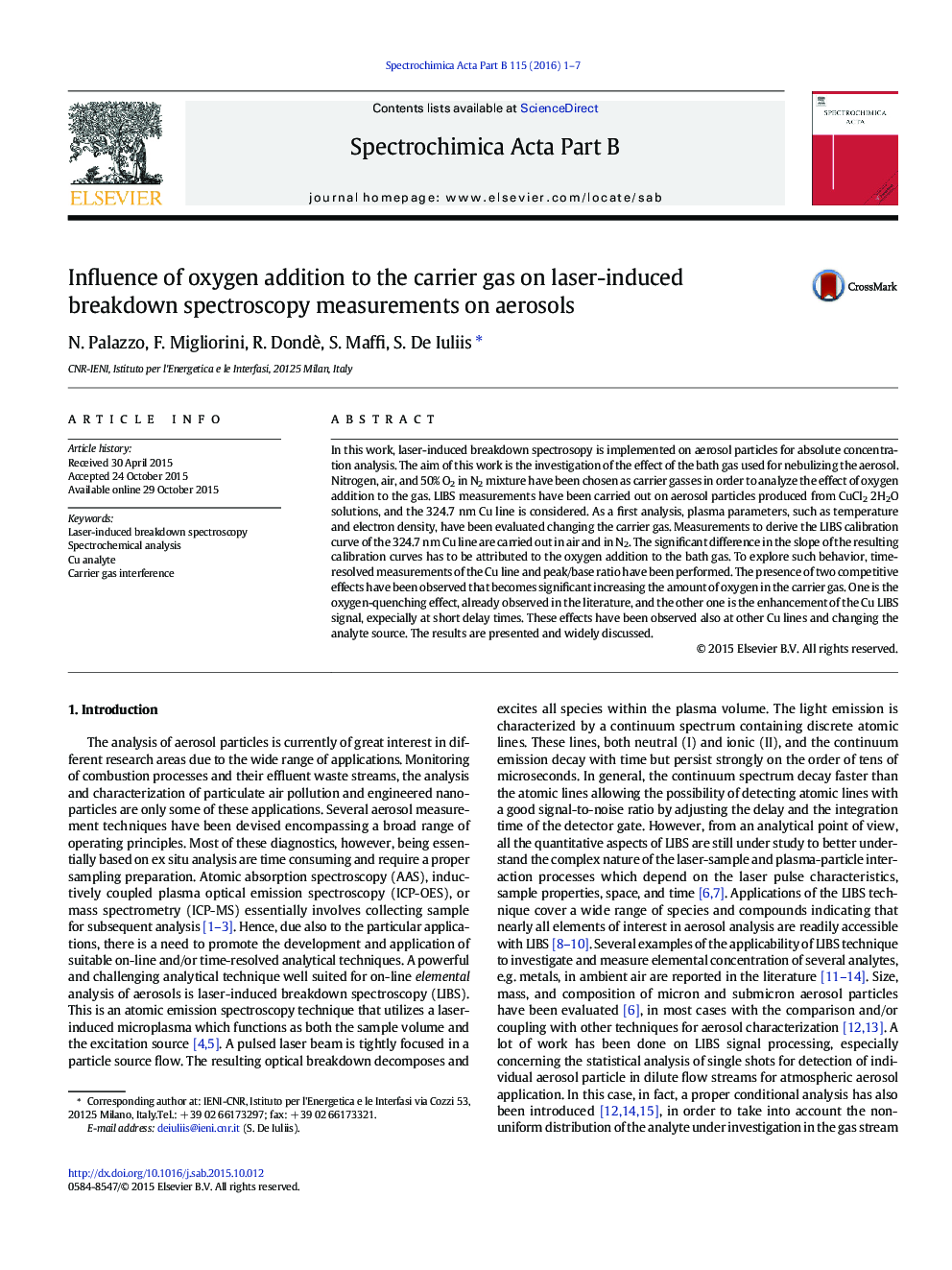| Article ID | Journal | Published Year | Pages | File Type |
|---|---|---|---|---|
| 1239710 | Spectrochimica Acta Part B: Atomic Spectroscopy | 2016 | 7 Pages |
•The presence of oxygen in the carrier gas produces no effects on plasma temperature and electron density.•Changing N2 with air, a significant change in the Cu calibration curve occurs.•In time-resolved LIBS measurements, two competitive phenomena are observed: an enhancement of the LIBS signal more significant at short delay time and a signal quenching at long delay time. Both effects are more important with increasing the oxygen amount in the carrier gas.
In this work, laser-induced breakdown spectrosopy is implemented on aerosol particles for absolute concentration analysis. The aim of this work is the investigation of the effect of the bath gas used for nebulizing the aerosol. Nitrogen, air, and 50% O2 in N2 mixture have been chosen as carrier gasses in order to analyze the effect of oxygen addition to the gas. LIBS measurements have been carried out on aerosol particles produced from CuCl2 2H2O solutions, and the 324.7 nm Cu line is considered. As a first analysis, plasma parameters, such as temperature and electron density, have been evaluated changing the carrier gas. Measurements to derive the LIBS calibration curve of the 324.7 nm Cu line are carried out in air and in N2. The significant difference in the slope of the resulting calibration curves has to be attributed to the oxygen addition to the bath gas. To explore such behavior, time-resolved measurements of the Cu line and peak/base ratio have been performed. The presence of two competitive effects have been observed that becomes significant increasing the amount of oxygen in the carrier gas. One is the oxygen-quenching effect, already observed in the literature, and the other one is the enhancement of the Cu LIBS signal, expecially at short delay times. These effects have been observed also at other Cu lines and changing the analyte source. The results are presented and widely discussed.
